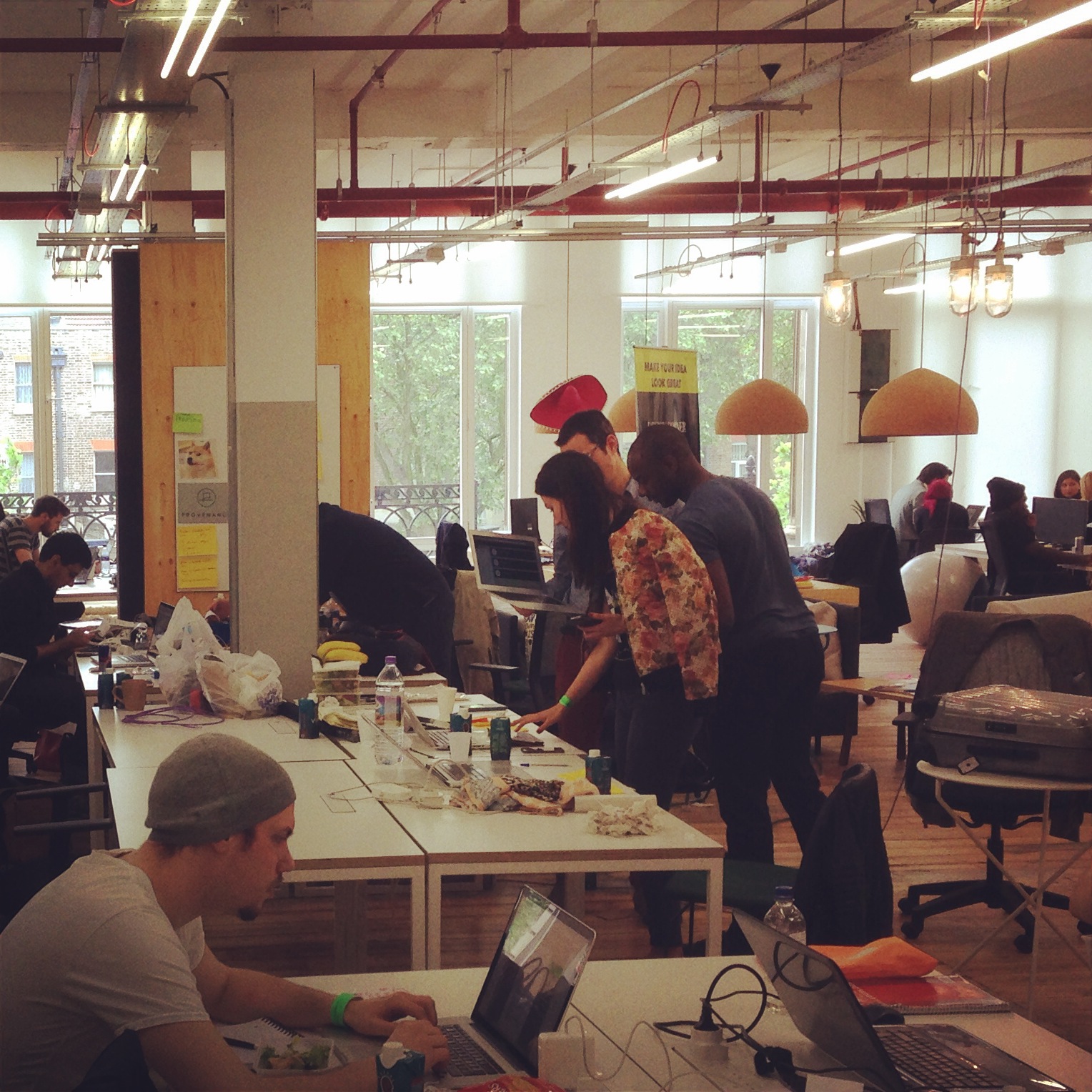Hacking Fashion
It was inspiring to see the energy and enthusiasm of the teams at Decoded's London Fashion Hackathon this weekend.
I was lucky to be on the judging panel.
Their brief was to present a technical solution that can help fashion brands. Over 25 different teams demo-ed on Sunday afternoon. 5 were shortlisted by the judges. The winner is announced tomorrow.
Winning a hackathon is not that different from finding product market fit with a startup, albeit on a smaller scale and tighter timeframes.
Some of the best solutions found an existing customer behaviour and found a way that technology could improve that experience.
An example of this is the fitting room experience. The customer is in the fitting room and would like to know if there is a different size to try on and doesn't want to have to get changed to go and fetch it herself.
A number of teams addressed this problem using iPad apps embedded in the changing room door, paired with apps for the storeroom attendant to see which changing rooms needed help.
To build a solution that can be easily adopted however, requires minimal effort (friction) from the consumer.
Of the the changing room apps presented, some required consumers to scan a garment with their phone. This is friction. I honestly can't see that working. An easier solution would be to just place a buzzer in the changing room.
The best solution therefore was one that used an RFID tag to sense the garments in range of the app and auto displayed these on the app screen with simple instructions to request another size. Less friction.
Another team showed us that it's important to use the path most travelled and use existing communication channels.
They used the existing "passbook" functionality on iPhones. From an email campaign, they offered a link to "save a garment to passbook" which meant that the passbook acted like a clipboard. Then, on passing by a store, the app would alert the customer and nudge them to pop into the store to try on the item.
It was an interesting way to tap into existing tech in a new way.
The 3 tips above concern improving the existing shopping experience. They are examples of how retailers are thinking about omnichannel ecommerce, blending online and offline content and experiences.
To be truly disruptive however requires a complete re-think about the shopping experience itself. There is a reason that online sales continue to grow and grow each year and it's driven by consumers. Going to the shops is for some people and enjoyable experience yet for many it's an inconvenience.
Mark Andreeseen goes as far as to claim that by 2020 traditional retail will be dead - yes dead.
True disruption is coming from online fashion retailers with innovative models such as Ly.st, Stylect and Thread. These businesses completely sidestep the traditional shopping experience and go way beyond standard ecommerce shopping carts.
If brands are to succeed online, they really do need to innovate and yesterday shows us that great things can happen when tech and fashion get together.
The next generation of retail is coming fast.
Will brands also be successful multichannel retailers or will we see an increasing specialisation?
Consumers will ultimately choose the best retail experience available to them.
